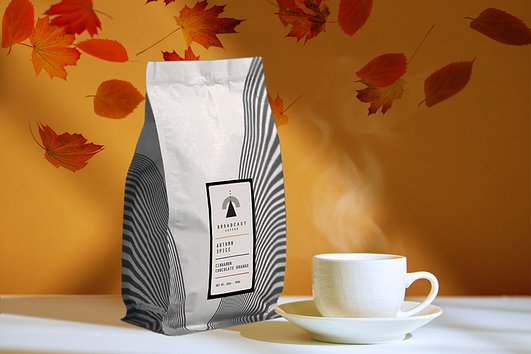22 Eye-Opening Facts About Coffee
![]() Maryna Gray
• May 04, 2021
Maryna Gray
• May 04, 2021
Did you know the type of cup from which you drink your coffee makes a difference in the taste?
At Bean Box, we know a thing or two about coffee. These are some of our favorite—and most surprising—coffee facts.
1. The type of cup you use makes a difference.
According to several scientific studies, the color, shape and even the texture of our cup makes a difference in the way we taste coffee. For instance, drinking dark coffee from a white cup creates a strong contrast, making us think our coffee is stronger. Conversely, when we drink from a clear cup, many of us perceive the coffee to be lighter and sweeter.
2. Light roast coffee has slightly more caffeine.
Ever wondered what the actual difference between light roast and dark roast coffee is, and if dark roast is stronger than light roast? It turns out dark roast isn't any stronger than light roast; in fact, light roast often has a bit more caffeine in it!
3. Coffee beans can actually be too fresh.
If your coffee beans are too fresh, your coffee might taste sour. That's why most roasters let their coffee beans sit (or "settle") for a few days before using them.
4. Using a French press might upset your stomach.
We love using a French press—don't get us wrong. But with this brew method, it's easier for sediment to find its way into your cup and thusly into your stomach. If you're prone to stomach issues, try drip coffee or the pour over method instead.
5. Coffee acidity doesn't mean the actual pH.
Instead, the acidity in coffee refers to its flavor profiles.
6. Bananas have (almost) the same pH as coffee.
Speaking of pH, bananas and coffee have about the same pH; bananas have a pH between 4.50 and 5.20, while coffee's pH falls between 4.85 and 5.10.
7. There's no such thing as espresso beans.
Some beans are formulated for espresso, but there's no such thing as an espresso bean. In fact, any coffee can be brewed as an espresso.
8. Your grinder matters more than your brew method.
Poorly ground beans can lead to a bad cup of coffee. That's why a good grinder is just as—if not, more important—than the coffee machine you use. (Fresh coffee beans are also a must.) So which grinder should you buy? Learn the difference between blade and burr grinders and which one is right for you.
9. Coffee has more flavonoids than wine.
Flavanoids are antioxidant agents. And while red wine has its fair share of flavonoids and antioxidants, coffee (and dark chocolate) has more!
10. Decaf coffee isn't caffeine-free.
It's impossible for coffee to be completely caffeine-free, as caffeine is vital to the growth of coffee plants. Decaf coffee is usually about 97 percent caffeine-free, but never 100 percent.
11. There's more than one type of coffee plant.
There are many species of Coffea (coffee plants). Some don't have caffeine, and some grow in hot and wet climates. Not all of them taste good, either.
12. Coffee has more caffeine than espresso.
Think that shot of espresso will give you a better caffeine kick than coffee? Think again! A cup of coffee has more caffeine than a shot of espresso. By volume, espresso has only about a third of the caffeine in a cup of drip coffee.
13. Coffee is grown in only two U.S. states.
Kona coffee is grown in Hawaii, and there are also parts of California where coffee is grown.
14. Albania has more cafes per capita than any other country.
No, it's not the U.S.! Albania has more cafes per capita than any other country in the world.
15. People in Scandinavia drink more coffee than anyone else.
Finland, Sweden, Iceland, Norway and Denmark hold the top five spots for most coffee consumed by person.
16. But Americans drink a lot of coffee, too.
The average American coffee drinker drinks just over three cups per day.
17. The average age of baristas in Italy is 48.
18. Teddy Roosevelt is said to have consumed a gallon of coffee a day.
19. Coffee fueled historic revolutions.
The American and French revolutions were plotted in coffeehouses.
20. Coffee is the world's second-most traded commodity.
It's only second to oil.
21. Cold brew is lower in acidity than hot coffee.
Most of us won’t notice the difference, but cold brew may be ideal for coffee drinkers with sensitive stomachs.
22. The world's most expensive coffee costs up to $1,500 a pound.
It's called Black Ivory and it's made with elephant droppings. Kopi Luwak, which costs about $600 a pound, comes from a palm civet (not quite a cat, though many people call it that).
We want to help you make better coffee at home. Our recommendations are our own, and never sponsored. If you see something you love and buy it through our links, we may receive an affiliate commission (thanks for that!).





